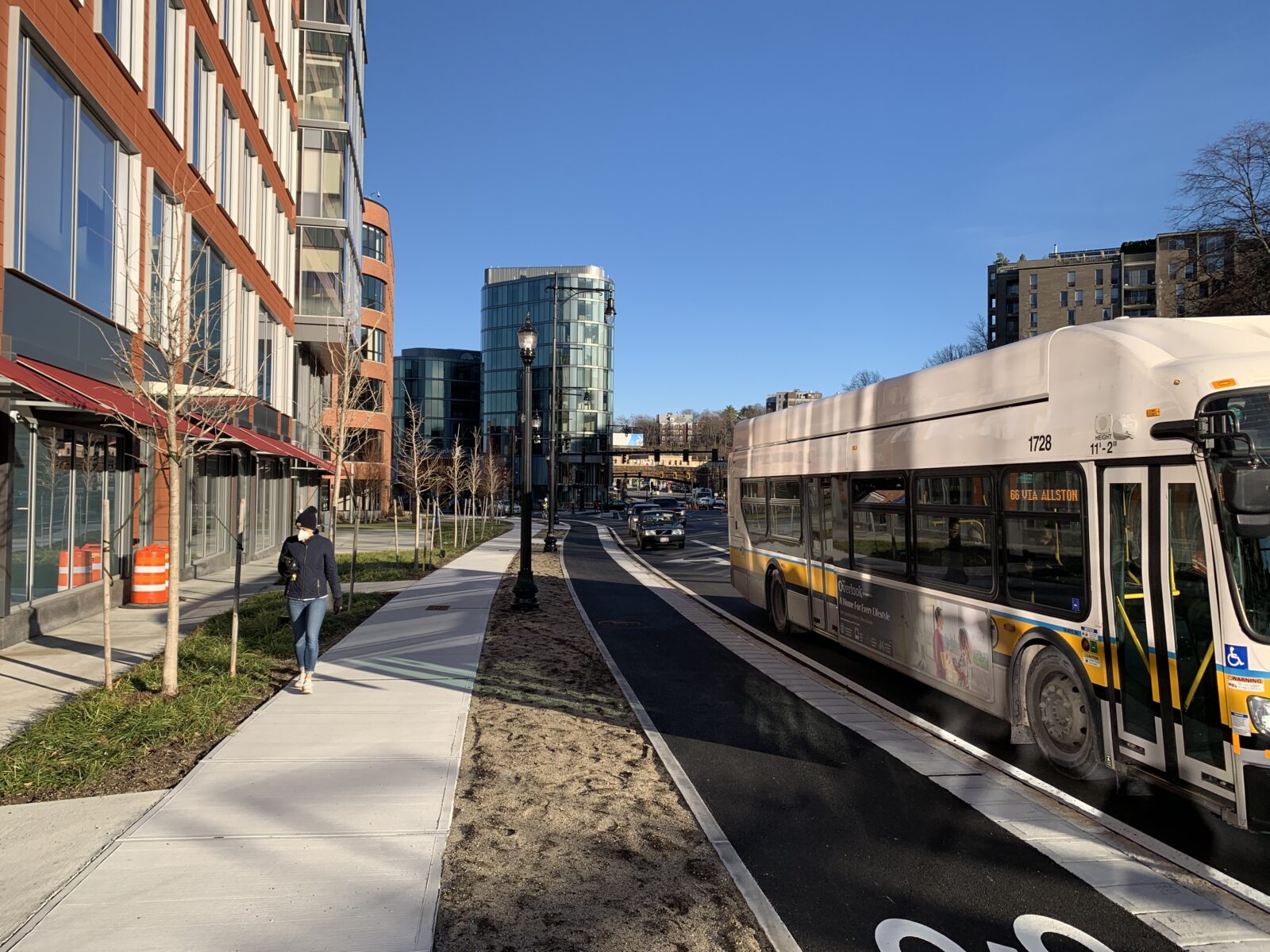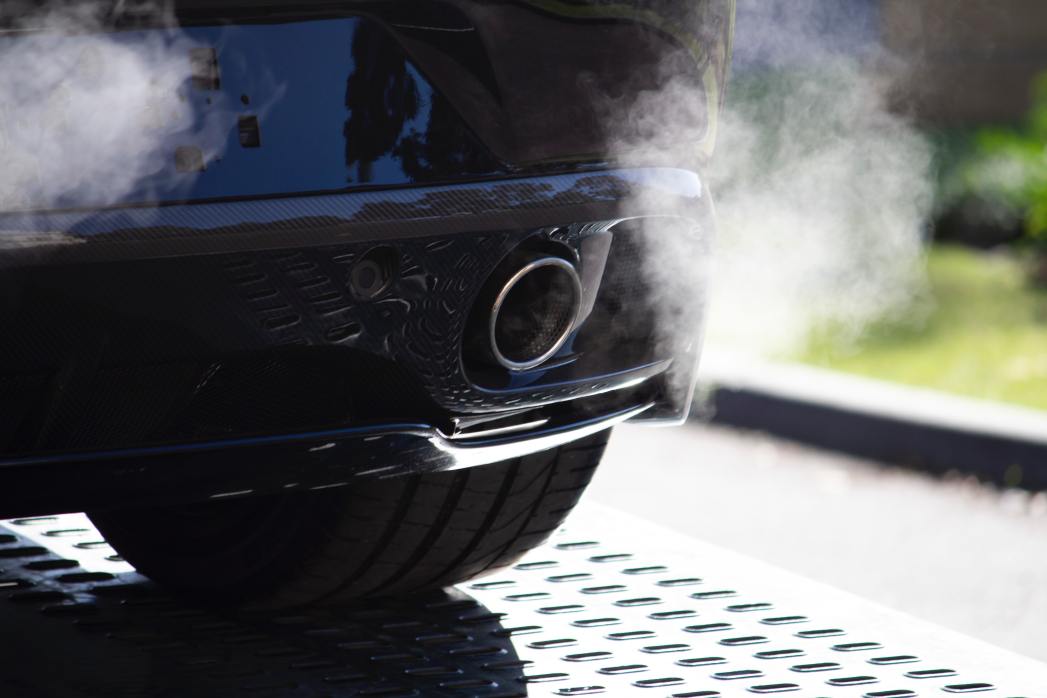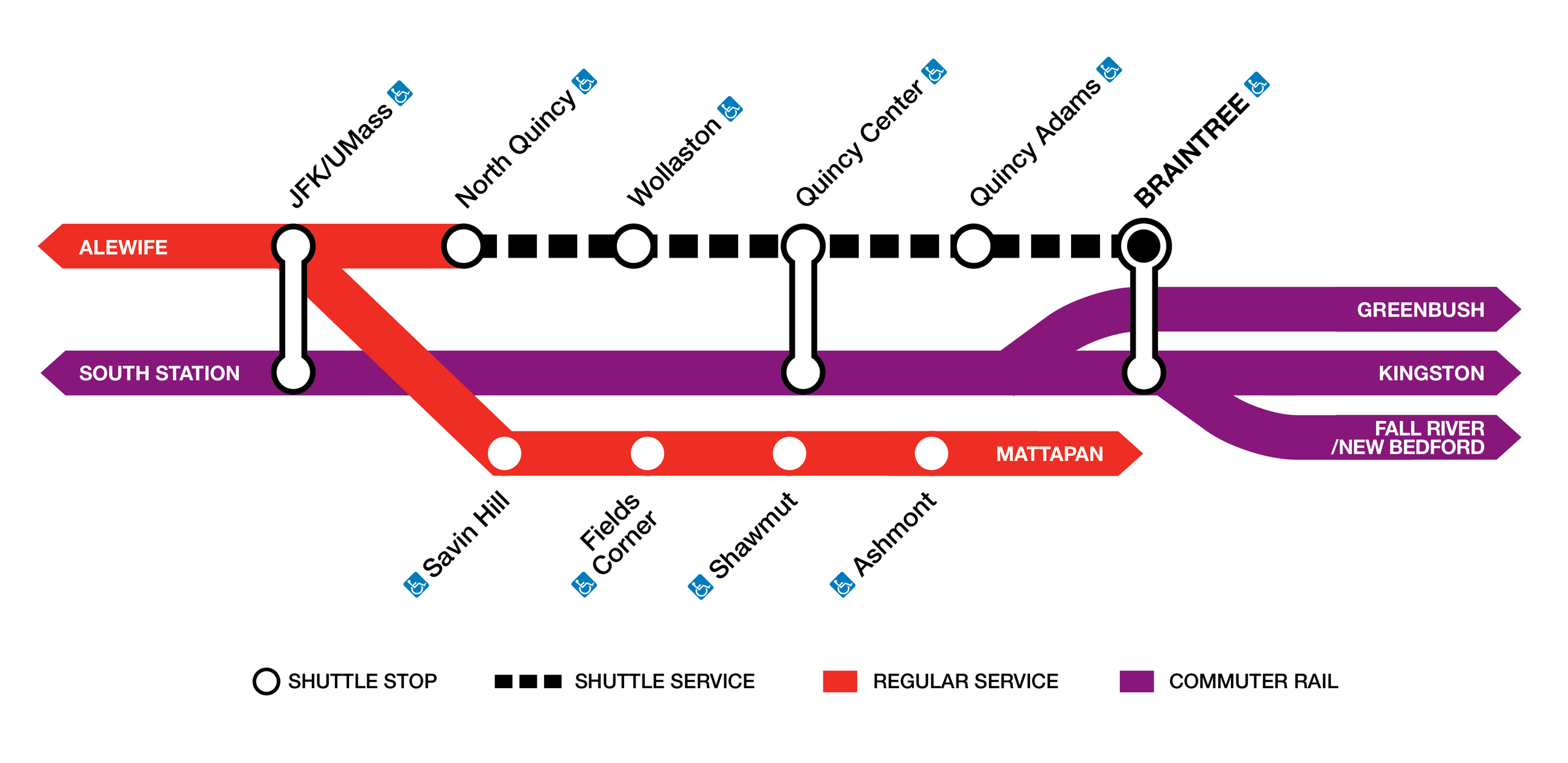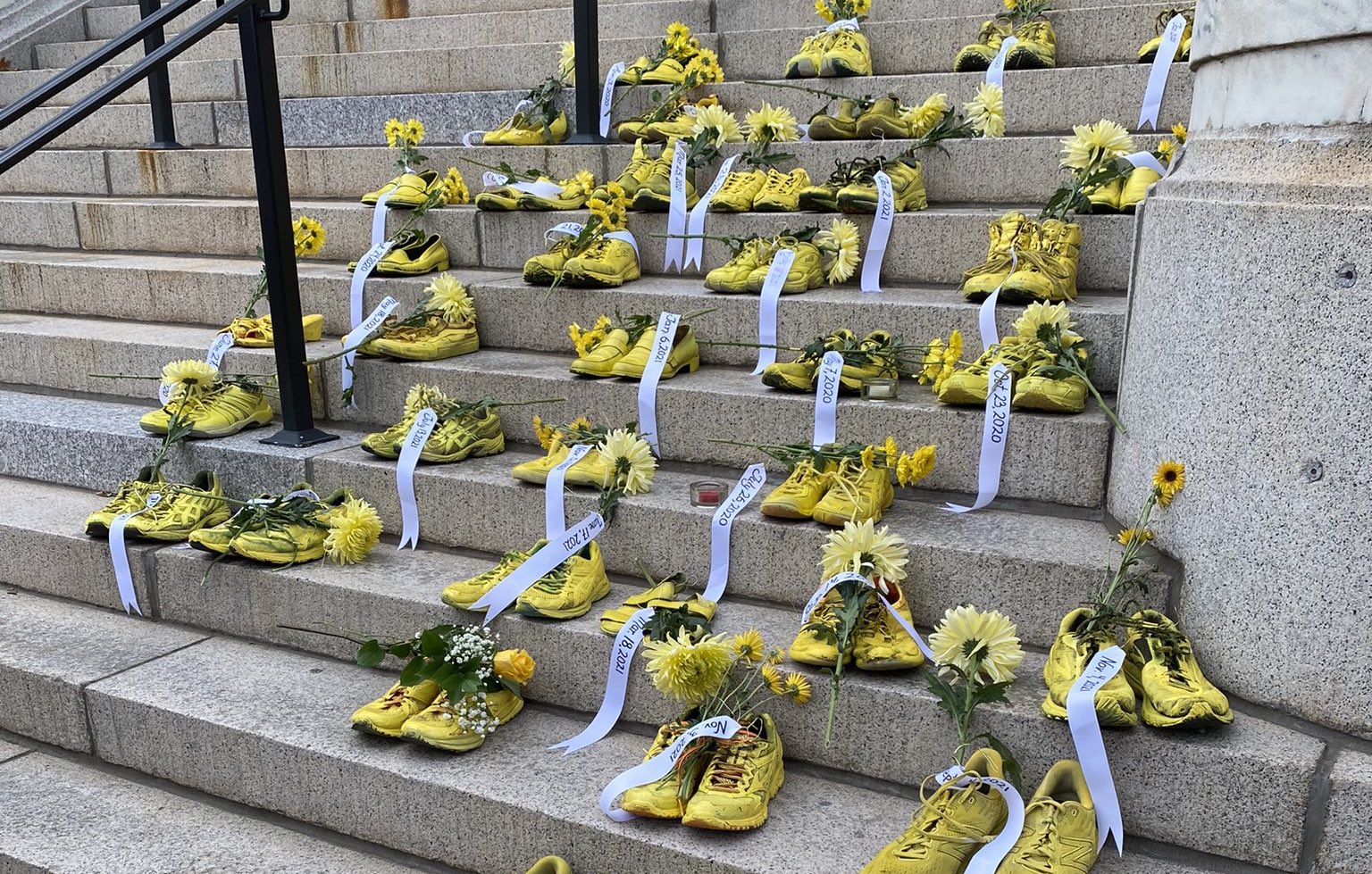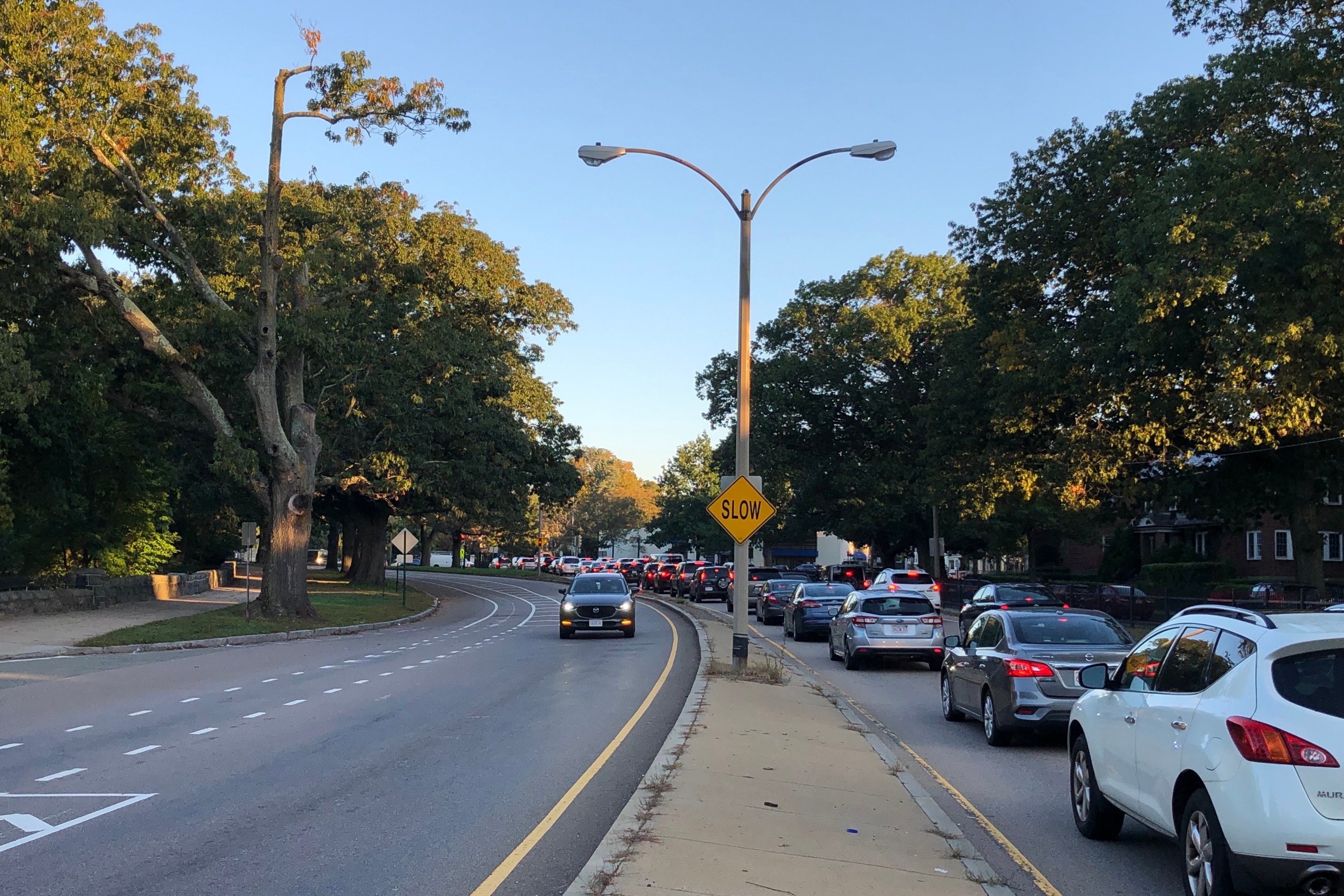While many state highway bureaucracies treat bike, pedestrian, and transit infrastructure as an afterthought, new MassDOT highway engineering guidelines will require traffic engineers to include sidewalks, crosswalks, bus stops, and high-quality bike facilities when they design upgrades for the Commonwealth's major roadways.
In a directive adopted in January 2020, MassDOT formally adopted three new "controlling criteria" that will require ADA-accessible pedestrian facilities and high-quality bikeways in state-run road reconstruction projects, plus bus shelters, crosswalks, and transit-priority infrastructure on road projects that affect major transit routes.
"I feel strongly that we’re leading the pack here," MassDOT Chief Engineer Patricia Leavenworth told Streetsblog in a recent teleconference to discuss the new policies. "I recall going to an AASHTO meeting a couple years ago, and several other DOTs told me that they thought Massachusetts is really a leader in this area."
Controlling criteria in highway engineering have traditionally governed things like how sharp a roadway's curve can be, the width of travel lanes, and the maximum grade on hills.
"Controlling criteria have been in place historically for a couple decades now," said Andy Paul, a MassDOT highway design engineer. "If you had to submit a design exception – for instance, for a horizontal curve that was tighter than the criteria allowed – engineers scattered, because of the process of getting it approved from the Federal Highway Administration (FHWA)."
In May 2016, the FHWA adopted a new set of controlling criteria at the federal level, and invited states to "adopt policies that are more restrictive" than the federal guidelines in order to "provide multiple transportation options to connect people to work, school, and other critical destinations."
That invitation aligned with MassDOT's new "Healthy Transportation Policy," adopted in 2013, which declared that "all MassDOT funded and or designed projects shall seek to increase and encourage more pedestrian, bicycle and transit trips."
"Back in 2013, we wanted to get better design concepts for other mobility options, but we found that folks would start with that roadway cross-section and focus on the motor vehicle, and other mobility options were sort of an afterthought," said Leavenworth. "We needed to think about how we should embrace this (healthy transportation) policy and make sure it’s carried out."
The newly-adopted controlling criteria for bike, pedestrian, and transit facilities lay out minimum standards to help ensure that all roadway users are considered from the beginning of a project's design process. Some highlights:
- Sidewalks at least 5 feet wide will be required on both sides of a roadway in villages and urbanized areas, on all bridges, and in areas with high potential for walking trips according to the latest Massachusetts Pedestrian Transportation Plan.
- A shared-use path, separated bicycle lane, or buffered bicycle lane will be required on roadways with multiple lanes in any one direction, or where the speed limit is 40 mph or greater, or where traffic volumes are greater than 10,000 vehicles per day, or in areas with high potential for bike trips according to the latest Massachusetts Bike Transportation Plan. Bike facilities will be designed in accordance with MassDOT’s new Separated Bike Lane Guide and the NACTO Urban Bikeway Design Guide.
- Projects that affect public transit routes will be developed in consultation with local transit agencies, and projects that affect routes where buses run every 15 minutes or less will include transit priority treatments. Shelters or benches will be provided at transit stops with at least 100 daily boardings, and crosswalks will be installed within 250 feet of any existing or proposed bus stop.
The new criteria are already having an impact in MassDOT's pipeline of construction projects.
In Newton, for instance, a state-funded project that's currently in design (tentatively scheduled for construction in 2025) would reconstruct Commonwealth Avenue near the Charles River to create a new two-way separated bike path from space that's currently reserved for motor vehicles:
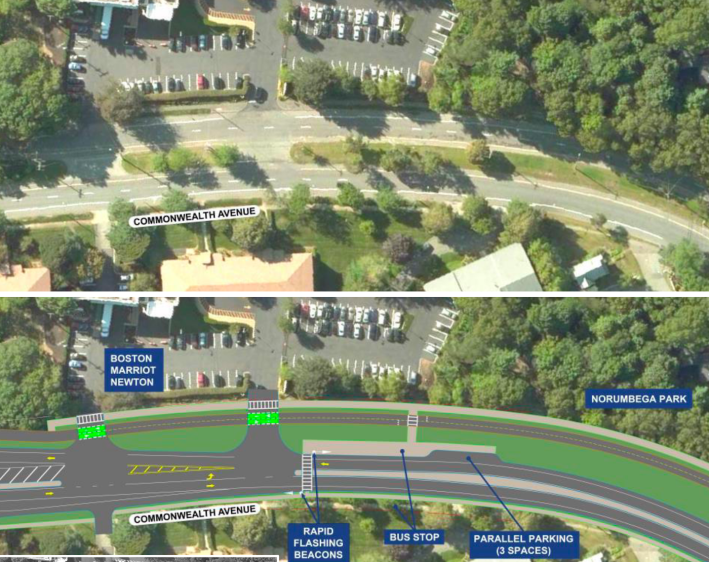
"That’s a common approach on many corridors - a lot of our streets were designed with overly generous lane width and shoulder widths," said Leavenworth. "Road diets (where MassDOT reduces the number of motor vehicle lanes on a roadway) can come with a lot of angst, but we’re very careful about when we apply them, and they’ve been very successful. I think the more people see them working, the more palatable they’ll be."
The new controlling criteria don't necessarily guarantee that every project will include new sidewalks and bike lanes: engineers can still request exceptions to the criteria when unusual constraints exist. But those exceptions will need to be thoroughly vetted in a public "Design Justification Workbook," and they'll also need to be formally approved by the Secretary of Transportation.
"It’s kind of like a household budget, where you have your list of things you want but you don’t have all the money you need, so you figure out how to compromise to get the things you really need," says Leavenworth. "How do you balance the space we have to get the most efficient design?"
